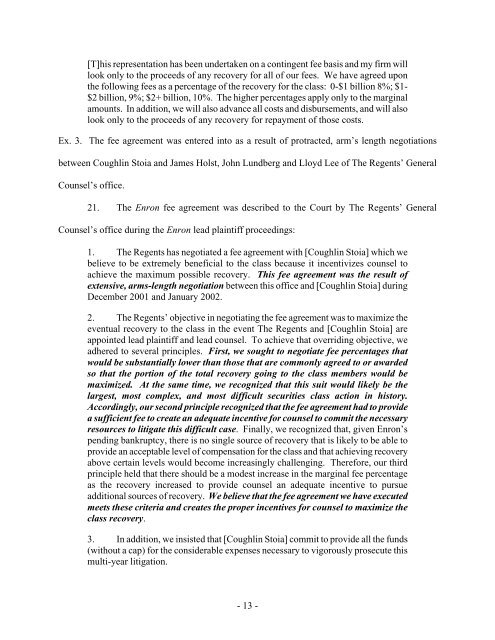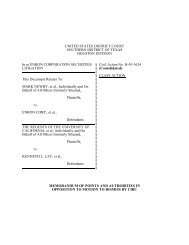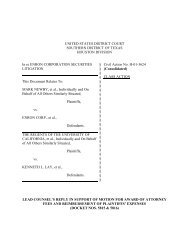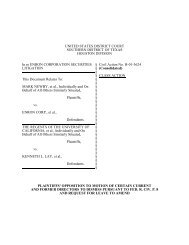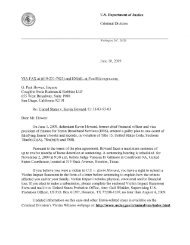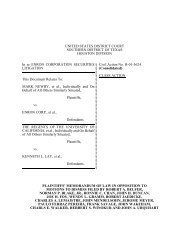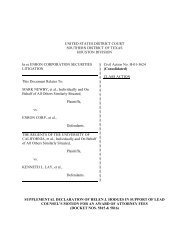Declaration Of Helen J. Hodges In Support Of Lead Counsel's ...
Declaration Of Helen J. Hodges In Support Of Lead Counsel's ...
Declaration Of Helen J. Hodges In Support Of Lead Counsel's ...
Create successful ePaper yourself
Turn your PDF publications into a flip-book with our unique Google optimized e-Paper software.
[T]his representation has been undertaken on a contingent fee basis and my firm will<br />
look only to the proceeds of any recovery for all of our fees. We have agreed upon<br />
the following fees as a percentage of the recovery for the class: 0-$1 billion 8%; $1-<br />
$2 billion, 9%; $2+ billion, 10%. The higher percentages apply only to the marginal<br />
amounts. <strong>In</strong> addition, we will also advance all costs and disbursements, and will also<br />
look only to the proceeds of any recovery for repayment of those costs.<br />
Ex. 3. The fee agreement was entered into as a result of protracted, arm’s length negotiations<br />
between Coughlin Stoia and James Holst, John Lundberg and Lloyd Lee of The Regents’ General<br />
Counsel’s office.<br />
21. The Enron fee agreement was described to the Court by The Regents’ General<br />
Counsel’s office during the Enron lead plaintiff proceedings:<br />
1. The Regents has negotiated a fee agreement with [Coughlin Stoia] which we<br />
believe to be extremely beneficial to the class because it incentivizes counsel to<br />
achieve the maximum possible recovery. This fee agreement was the result of<br />
extensive, arms-length negotiation between this office and [Coughlin Stoia] during<br />
December 2001 and January 2002.<br />
2. The Regents’ objective in negotiating the fee agreement was to maximize the<br />
eventual recovery to the class in the event The Regents and [Coughlin Stoia] are<br />
appointed lead plaintiff and lead counsel. To achieve that overriding objective, we<br />
adhered to several principles. First, we sought to negotiate fee percentages that<br />
would be substantially lower than those that are commonly agreed to or awarded<br />
so that the portion of the total recovery going to the class members would be<br />
maximized. At the same time, we recognized that this suit would likely be the<br />
largest, most complex, and most difficult securities class action in history.<br />
Accordingly, our second principle recognized that the fee agreement had to provide<br />
a sufficient fee to create an adequate incentive for counsel to commit the necessary<br />
resources to litigate this difficult case. Finally, we recognized that, given Enron’s<br />
pending bankruptcy, there is no single source of recovery that is likely to be able to<br />
provide an acceptable level of compensation for the class and that achieving recovery<br />
above certain levels would become increasingly challenging. Therefore, our third<br />
principle held that there should be a modest increase in the marginal fee percentage<br />
as the recovery increased to provide counsel an adequate incentive to pursue<br />
additional sources of recovery. We believe that the fee agreement we have executed<br />
meets these criteria and creates the proper incentives for counsel to maximize the<br />
class recovery.<br />
3. <strong>In</strong> addition, we insisted that [Coughlin Stoia] commit to provide all the funds<br />
(without a cap) for the considerable expenses necessary to vigorously prosecute this<br />
multi-year litigation.<br />
- 13 -


